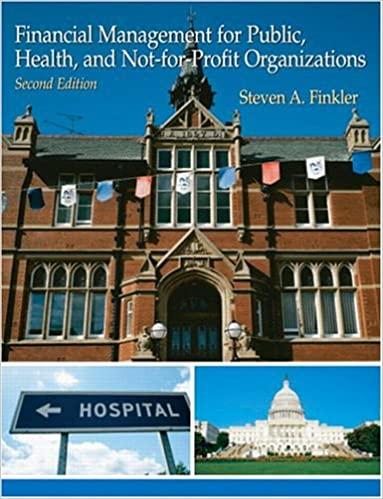Question
Ezzell Enterprises has the following capital structure, which it considers to be optimal under present and forecasted conditions: Debt (long-term only) 45% Common equity 55
Ezzell Enterprises has the following capital structure, which it considers to be optimal under present and forecasted conditions:
Debt (long-term only) 45%
Common equity 55
Total liabilities and equity 100%
For the coming year, management expects after-tax earnings of $2.5 million. Ezzell's past dividend policy of paying out 60 percent of earnings will continue. Present commitments from its banker will allow Ezzell to borrow according to the following schedule:
Loan Amount Interest Rate
$1 to $500,000 9% on this increment of debt
$500,001 to $900,000 11% on this increment of debt
$900,001 and above 13% on this increment of debt
The company's marginal tax rate is 40 percent, the current market price of its stock is $22 per share, its last dividend was $2.20 per share, and the expected growth rate is 5 percent. External equity (new common) can be sold at a flotation cost of 10 percent.
Ezzell has the following independent investment opportunities for the next year:
Project Cost IRR
1 $675,000 16.0%
2 900,000 15.0
3 375,000 14.0
4 562,500 12.5
5 750,000 11.0
Management asks you to help determine which projects (if any) should be undertaken. You proceed with this analysis by answering the following questions (or performing the tasks) as posed in a logical sequence:
a.How many breaks are there in the MCC schedule? At what dollar amounts do the breaks occur, and what causes them?
b.What is the weighted average cost of capital in each of the intervals between the breaks?
c.Which projects should Ezzell's management accept?
d.What assumptions about project risk are implicit in this problem? If you learned that Projects 1, 2, and 3 were of above-average risk, yet Ezzell chose the projects that you indicated in part (c), how would this affect the situation?
e.The problem stated that Ezzell pays out 60 percent of its earnings as dividends. How would the analysis change if the payout ratio were changed to zero, to 100 percent, or somewhere in between? (No calculations are necessary.)
Step by Step Solution
There are 3 Steps involved in it
Step: 1

Get Instant Access to Expert-Tailored Solutions
See step-by-step solutions with expert insights and AI powered tools for academic success
Step: 2

Step: 3

Ace Your Homework with AI
Get the answers you need in no time with our AI-driven, step-by-step assistance
Get Started


